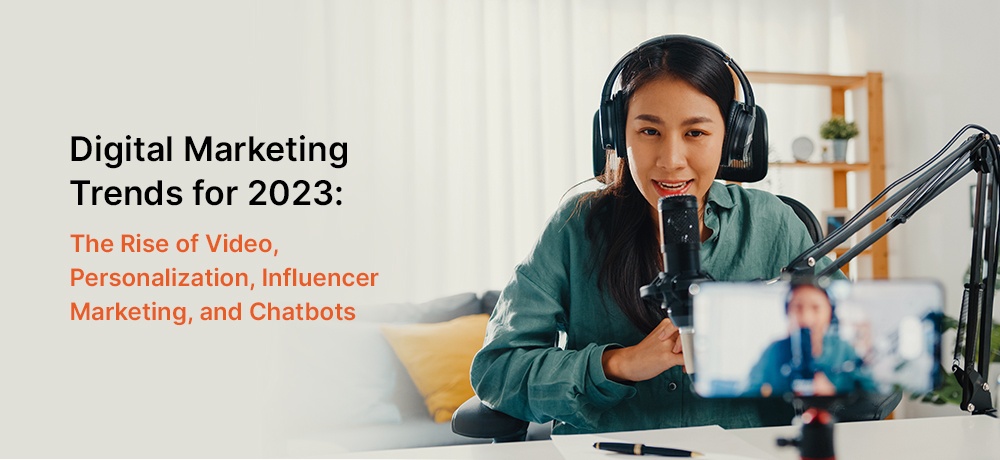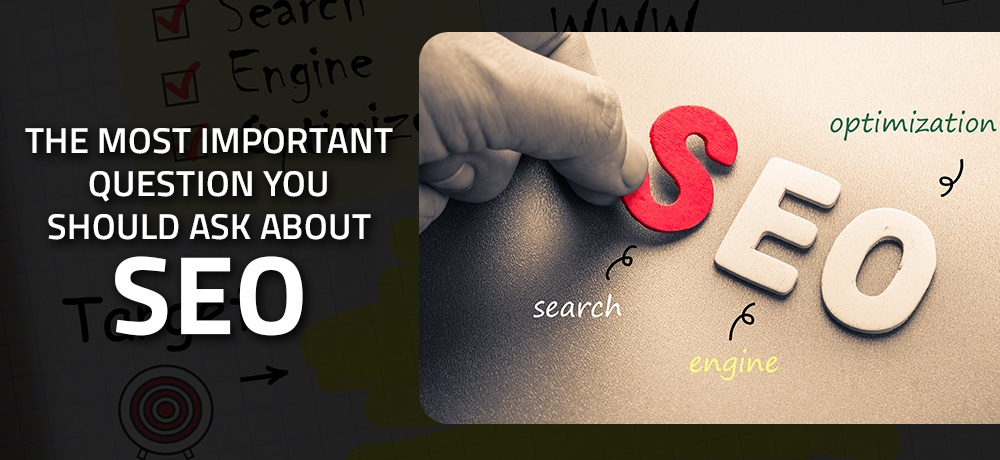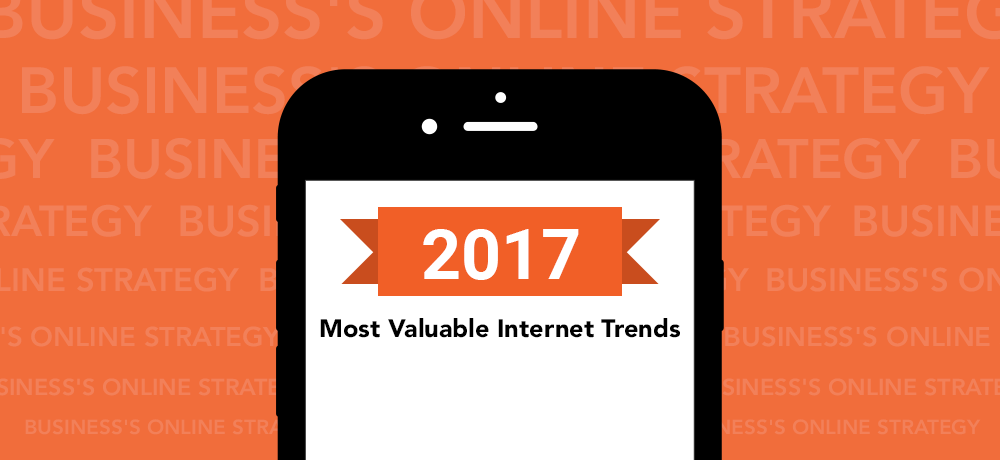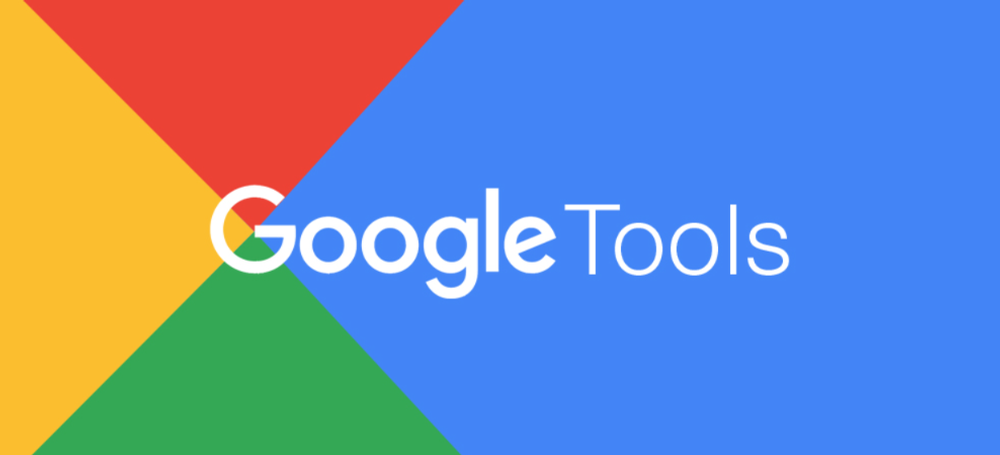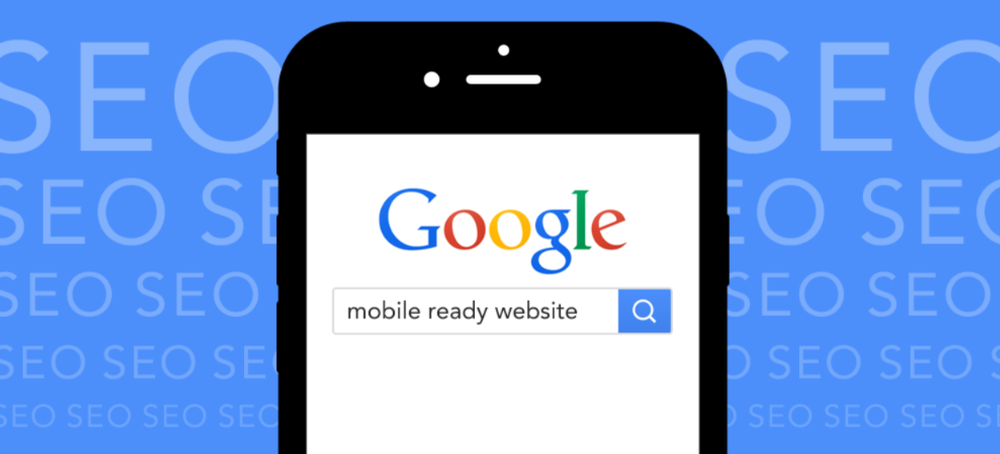5 Reasons Why Your Small Business Needs a New Website
As a small business owner, having a website is crucial to your success in today's digital age. If you don't already have a website, or if your current website is outdated or hard to use, it's time to consider investing in a new one. Here are 5 reasons why your small business needs a new website:
-
Reach a wider audience: With a website, you can easily share information about your products and services with potential customers from all over the world. This can help you expand your customer base and increase sales.
-
Improve your credibility: A professional-looking website can establish your business as an expert in your field, which can help you attract more customers and build trust with potential clients.
-
Save time and money: A website can streamline your customer service process by allowing customers to find answers to common questions on their own. This can save you time and money, so you can focus on running your business.
-
Stay competitive: In today's market, having a website is increasingly important for small businesses. Without a website, you may be at a disadvantage compared to your competitors.
-
Gain valuable insights: A website with built-in analytics can provide valuable data about your visitors, such as where they are coming from, how long they stay on your site, and what pages they visit. This data can help you understand your audience better and make informed decisions about how to improve your website and marketing efforts.
In conclusion, a new website is a crucial investment for any small business looking to stay competitive in today's digital age. With a new website, you can reach a wider audience, improve your credibility, save time and money, and gain valuable insights about your customers. Don't let your small business fall behind, take the first step towards a modern and effective website today by scheduling a demo with Webware. Our team of experts will work with you to understand your business needs and create a website that will help you reach your goals. Don't wait, schedule a demo with Webware today and take your small business to the next level!
Digital Marketing Trends for 2023: The Rise of Video, Personalization, Influencer Marketing, and Chatbots
Digital marketing is constantly evolving, and as we move into 2023, there are several trends that small business owners should be aware of.
Video Content:
One of the biggest trends in digital marketing is the continued rise of video content. More and more businesses are using video to engage with their audience, and this trend is only set to continue in 2023. Whether it's live streaming on platforms like Facebook and Instagram, or creating engaging videos for YouTube and Vimeo, video is a powerful tool for reaching and engaging with potential customers.
Personalization:
Another trend to watch out for in 2023 is the increasing importance of personalization. As consumers become more savvy and more selective about the content they engage with, businesses will need to find ways to tailor their marketing messages to individual customers. This could involve using data and analytics to create personalized email marketing campaigns, or using AI and machine learning to personalize the customer experience on a business's website.
Influencer Marketing:
In addition, the use of influencer marketing is also set to grow in 2023. Influencer marketing involves partnering with social media influencers who have a large following in your target market and using their influence to promote your business. This can be a powerful way to reach a large audience and build trust with potential customers.
Chatbots:
Finally, the use of chatbots is also set to increase in 2023. Chatbots are AI-powered software programs that can simulate conversations with customers in real-time, providing quick and convenient answers to common questions and helping to improve the customer experience.
In summary, digital marketing in 2023 is all about video content, personalization, influencer marketing, and chatbots. Small business owners who want to stay ahead of the curve should consider incorporating these trends into their marketing strategies.
Need help with website and digital marketing for your small business? Join over 4000 business owners like you that are a part of Webware. Book a Growth Session with us and let’s look at your current efforts and if Webware is the right fit for you.
How LinkedIn Marketing Can Help You Scale Your Business
Once upon a time, LinkedIn was only known as a job-related social media platform "for professionals". Now, with over 700 million active users, LinkedIn has become the second most used platform for B2B marketers.
As a small business owner, LinkedIn marketing should be another priority on top of having an active Facebook, Twitter, and Instagram presence. However, in order to do that, you will need to understand how LinkedIn works to make sure your presence is felt.
Unlike with other social media platforms, obvious sales tactics and spamming your business will not work on LinkedIn. People are not expecting you to sell products or services on LinkedIn. What they are interested in is the information and expertise you have to share. Marketing on LinkedIn requires a different approach if you want to get results.
To help you add one of the world's largest professional networks to your marketing toolkit, we've listed some tips and tricks to help you scale your business.
1. Complete Your LinkedIn Company Profile
Did you know that Company Pages with complete profiles receive up to two times more visitors than those with incomplete page profiles?
For a complete profile, it’s essential to have the following items:
- Logo
- Company description
- Website URL
- Company Size
- Industry
- Company Type
- Location
To fully complete your LinkedIn profile, head to your Company Page and select “Overview.” There you can upload a high-resolution image for your company logo as well as a cover image that represents your brand. Along with that, filling out the "About Us" section will provide your visitors with more information.
Beneath the "About Us" section, you will find more fields to complete your profile by entering your website URL, company size, industry, type, and location. All of this helps make your business' LinkedIn profile look more legitimate and professional, giving potential customers the opportunity to connect with you.
2. Get A Custom URL.
As part of your LinkedIn marketing package, you can claim a custom URL for your business. This makes it easier for people to remember your brand if they want to contact you, especially when they search for your company online. This is especially useful in the B2B sector where people use LinkedIn regularly to learn more about a business.
3. High-Quality Content = High-Quality Returns
Content is king and the more you post, the more likely you are to get tangible results for your business. LinkedIn helps improve their user experience by integrating content natively into their platform, videos included. All content you post should accomplish either of the following goals: teach people to solve a problem or how to do their job better.
Not only will this make you become a thought leader in your space, it will lead to more business by delivering more value to your customers.
It is also important to brand your LinkedIn profile the same way as your website and other social media accounts for consistency. This includes imagery, colours, content tone, and more.
4. Create A Regular Posting Schedule
According to LinkedIn, businesses that post at least once per month gain followers 6X faster than those that don’t. However, you should aim to post at least once per week to keep your followers engaged. To help you post consistently, create a scheduling template so that you can easily plan your posts each week.
We’ve found that LinkedIn content performs really well if you include a descriptive caption, eye-catching images, and relevant hashtags. As a bonus, you can add emojis, questions, and bullet points to switch up the look and feel of your content.
5. Every Connection Can Lead To A Business Relationship.
LinkedIn is a social network for professionals to connect with other professionals. As a business owner, you can connect with prospects, partners, and other business owners to reach your goals. You will also be able to reach your target market with the ability to nurture them through the buyer's journey.
Once these connections have been strengthened, you can decide which should be developed into business relationships and which can continue as connections.
6. Join Groups And Stay Active.
By joining relevant groups, you will be able to participate in relevant discussions to better reach your target demographic and learn what your competition is doing. Groups are an excellent way to listen to what your audience is talking about and answer any questions they might have. On top of that, being a part of a group gives you access to more connections than ever before.
7. Boost Your Email Marketing List.
Linkedin lets you communicate with fifty people at a time, a feature that should be taken advantage of to increase your email list. You can include a link for them to sign up for your emails directly along with a special offer. Offer to look at something of value for them in order to generate goodwill and get some replies.
8. Target Specific Segments With Sponsored Posts
Unlike other social media platforms, LinkedIn offers a very specialized advertising platform that is unparalleled. You can zero in on the exact industry, company size, and job roles to reach the people who typically buy your products or services.
For example, if you are selling translation software to small businesses in Canada, you can set your campaigns to only show for businesses with under 100 employees, that are based in Canada, and only to executives at those companies.
9. Promote your Company Page Beyond LinkedIn
A LinkedIn marketing strategy on its own will not get you results. It is essential to promote your presence across different channels in order to maximize your growth.
For example, have a link to your LinkedIn profile in your marketing communications, email signatures, blog posts, and more. You can also add a LinkedIn “Follow” button to your website and make it easy for people to share content at any point throughout their reading experience. By adding a LinkedIn “Follow” button to your landing pages or using sticky social media sharing buttons in your blog posts, you set yourself up for long-term success.
LinkedIn is an untapped market for many small business owners. As one of the top digital marketing service providers in Toronto, Webware.io wants to help you take advantage of every tool there is to help you grow your business.
If you’re a small business owner and know that you need to take advantage of social media platforms like LinkedIn, but don’t have the time to learn and manage these tools on your own, we can help you. Webware.io gives you the expertise, tools, and support to help your business navigate your digital channels. To learn more about our services and how we can help maximize your business’ exposure online, please click here.
If you have any questions about how we can help with your digital marketing needs, we’d love to hear from you. Please contact our experts here.
The Most Important Question You Should Ask About SEO
As specialists in digital marketing, Search Engine Optimization (SEO) is one of the many tools we offer our clients as part of our digital marketing toolkit. And often, one of the first questions that we’re asked is, “How much time will it take for SEO to show results?”
The answer to this question isn’t straightforward as the SEO game is in a perpetual state of flux and is continually changing.
SEO today is increasingly driven by what is called ‘phrase’ or ‘instruction’ search, as people now use questions, phrases, or instructions rather than two to three keywords. One of the primary reasons for this change is down to people using tools like ‘Siri’ and Google ‘voice search’ to speak their searches, rather than typing them in. In addition, people have also begun including more details in their typed searches as they want to find what they’re looking for faster.
These keywords are much easier to rank for as they’re not as competitive and are much more relevant because they include more detail. As a result, traffic from these keywords converts at a higher rate. In aggregate, the number of searches in the long tail often adds up to many more searches than you would get from your “golden keywords.” Therefore, the objective, when it comes to search rankings, is not to rank for a few top keywords that remain the same over time but to focus on a much larger number of phrase or instructional searches that are growing and changing rapidly.
How long does it take for SEO to start working? Don’t stop too soon!
Earlier, the strategy was to identify those keywords that were the most relevant to a business, got the most traffic, and weren’t very competitive. We used to figure out ten to fifteen keywords that were called the “golden keywords” and would bring in the majority of the traffic. That keyword strategy is now evolving, because with rarer and rarer exceptions, there is no one keyword, and no small group of keywords, that is going to drive a lot of traffic to a website. Instead, a long tail of search is the new mantra for SEO.
Do search rankings really matter? Output v/s Outcomes!
Search rankings matter, but they’re not the metric you should be focusing on. If, by asking “How long does SEO take to show results?” you mean “How long will it be before I get top rankings?” then you’re mistaking outputs for outcomes. Getting rankings is an output SEO firms can easily sell because they’re emotionally satisfying, but they’re worthless unless they generate the outcome you want - Leads / Activations / Sales / Service Requests, etc. That’s why you should only hire SEO firms or SEO professionals who focus on outcomes, rather than outputs.
The question you should be asking about SEO!
Now that you know how SEO has changed and that you want leads and sales from your SEO firm rather than just rankings, the question you should be asking is “How long will it take for SEO to start generating leads and sales?”
Now that we’re ready to answer the right question, the answer is - SEO success depends on a few factors. Factors such as how long has your website been around, how much SEO has been done on it previously, what shape the website is in, how much content is on it, its link profile, and others, all contribute to answering the question you’ve asked.
Professional SEO firms or individuals will tell you that it usually takes four to six months to start seeing results. That’s usually an accurate assessment, but keep in mind that this is when the results will start coming in, and SEO results grow over a period of time. Whatever results you’re getting at six months should be considerably less than what you’re getting at twelve months. At some point, you may see your results slow down a bit, and then it may be a matter of maintaining results rather than growing them.
Many companies underestimate how much time and money it takes to be successful with SEO. SEO success by any standard rarely comes within the first three months, even with a healthy, substantial budget.
We’ve experienced companies getting started the right way, but quit after two to three months saying, “We just weren’t getting the ROI we needed to justify the spend.” This experience highlights that these companies went into the SEO exercise with unrealistic expectations, mainly fuelled by knowledge gained from unprofessional and unreliable sources (and there are plenty of them in the market these days).
If you can’t budget for six to twelve months of SEO, you might be better off putting that budget somewhere else as paying for just a couple of months of SEO activity is no better than throwing your money away. SEO is a long-term marketing tactic, and shouldn’t be seen as a way to generate sales quickly. If companies make the proper investment and plan it for a long time, then SEO will get them the best ROI on their spend.
If you’d like to take your SEO to the next level, reach out to the digital marketing experts at Webware.io. We specialize in optimizing websites and content for improved search engine results and provide small businesses with the right tools and supporting services to nurture and manage their online presence.
Our head office is located in Toronto, and we serve clients across Canada and North America.
To learn more about our services and complete digital marketing tool kit, please click here. If you have any questions about how we can help with your digital marketing needs, we’d love to hear from you. Please contact our experts here.
The Most Valuable Internet Trends in 2017 for your Small Business's Online Strategy
Increasingly, digital consumers are relying upon their smartphones for easy and instant communication, research and entertainment. To better serve your existing clients, and to expand your reach, attracting new customers; your business web strategy needs to keep pace with this, and other swiftly evolving trends.
The web is always growing and changing to suit, and even to shape, the needs of consumers. Their tastes and online habits can change quickly. While some new directions may turn out to be fads; those trends which provide online users genuine and continuing value can permanently alter the way the internet is used. To help you reach your business goals, we offer you the following must-know and must-do responses to the most relevant web trends for your online presence this year.
Mobile-first Websites
Last year, the number of Google searches which took place on mobile devices surpassed the number of searches that took place from desktop computers. The share of mobile device online searches is 72 per cent in the Food and Beverage industry. Anticipating and watching the rapid and steady growth of smartphone use; Google has taken several steps over the past years to encourage more mobile-friendly websites (like May2015 and May 2016 insert citation). In response, many businesses have worked to create websites that were more mobile-friendly. As the shift continues exponentially, businesses must continue to adapt their websites from “mobile-friendly” to “mobile-first”. Instead of starting from a desktop website, modified to also perform well on a smartphone or tablet; the user experience, navigation, layout, and content have to be tailored specifically for mobile screens. Smartphone use is rising around the world.
Having a mobile-first website is the smart way for businesses to capitalize upon this future wave.
Mobile Shopping.
According to an emarkter.com report, “M-commerce is growing faster than either e-commerce or traditional retail and is transforming the way shoppers approach all three”. Gone are the days when online shopping was something you did only at home or at the office. In this digital-first world, consumers are increasingly using their mobile devices to complete more and more types of tasks, including shopping, at all times of the day. According to the Pew Research Centre, an average of 70% of Canadians and Americans now own a smartphone. Apart from the growing number of smartphones, larger smartphone screens, efficient payment options and a rise in mobile-first websites are also contributing to the m-commerce trend. Businesses, including those with brick and mortar stores, can stay relevant by adopting a mobile-first strategy. Even if your customers finish the transaction in your physical store, chances are very high that their search began online, on the move.
Hyper Local Search.
According to Google, “nearly one third of all mobile searches are related to location, and that number is growing”. Given the growth in “near me” searches, it’s no wonder that Google is always refining their local search capabilities. Instead of local search including only cities or towns, it can now include smaller locales like neighbourhoods, streets or even city blocks. This gives small businesses ample opportunity to reach nearby customers. Google reports that 76% of people who search on their mobile devices for something nearby visit the business within a day. Twenty-eight percent of these searches result in a purchase. As long as your business and website are fully optimized for location searches, your business can directly benefit from Google’s improved hyperlocal search algorithms.
Reviews for SEO
The trend of the degree to which quality reviews boost SEO shows no signs of slowing through 2017. Google loves reviews, both on their own platform and from reputable third party review sites like Yelp. And although Google never shares their exact secret equation for rating websites, moz.com surveyed top online marketers around the world to highlight the most important SEO factors for your business. Among the “Top 30 Difference-Making Factors in Competitive Markets”, three are review related: #7 is Quantity of Native Google Reviews (w/text) #25 is Quantity of Third-Party Traditional Reviews and #29 is Diversity of third-party sites on which reviews are present. In addition, moz.com also reported that Review Signals contribute over 8% to a website’s overall rank in search results.

This data from Yotpo also highlights the importance of reviews in a big way. They tracked the number of page views for 30,000 businesses that added reviews to their websites. Over a 9 month period, the average number of page views rose from 5500 to 8000 views per month. Wow!

If stories like these have convinced you that your business needs more reviews, head over here to learn more about why they matter and how to ask your loyal customers to write those all-important reviews.
The end of distinct mobile and desktop versions
The theme of many of these internet trends is the same; a smooth, seamless experience for mobile users. And something that can really hinder this desired seamlessness is having two website versions: one desktop and one mobile. Google currently uses the desktop version to index the information of a website. However, in many cases, there is less information on mobile versions to accommodate for the smaller screen size. This can leave mobile users at an informational disadvantage and will contribute to a poor user experience. Given the boom of mobile search and their dedication to user-experience, Google is discouraging two version websites. In an effort to continue providing users the best possible experience; late last year Google began the shift to index mobile versions instead of desktop versions. Google says it is currently in the experimental phase. But, there is likely an official announcement not far down the road. If your business website is one-version, mobile friendly it is already prepared for the change. If not, now is the time to bring your website up to 2017 standards.
Summing Up
The web has changed so much about the way we buy and sell, share information and keep in touch. It is still changing. The competition to put your information ahead of others in the marketplace is on par with the importance of the quality and value of your products and services. The latest steps in how we manage SEO and the mobile web are having profound effects on building and presenting websites. Businesses that strategically respond by keeping up with, and better yet, staying ahead of these curves will profit from retaining existing clients, keeping them satisfied, and reaching new audiences with crucial information and inviting them to enter through their mobile digital door.
8 Festive Marketing Ideas to Boost Sales this Holiday Season
With the gift-giving season in full-swing, researchers are predicting the average American family will spend $929 on presents in 2016. That’s an increase of $60 from last year’s holiday season spend of $882. This makes it a perfect time for small businesses to increase sales and entice life-long customers with holiday marketing promotions.
We have created the ultimate guide for advertising your small business this festive season. No matter what your budget is, this list is sure to include an idea that fits your business needs.
1. Decorate Your Store And Website
Customers flock to well-decorated and well-lit shops. Stands out from your competition with bright, festive decorations. Your holiday decorating efforts are sure to encourage more people to walk through your doors and see what your business has to offer.
This holds true for your website, too. If your business only operates online, you could design a holiday-themed banner or ask your graphic designer to add some festive touches to the homepage.
Studies have shown that people feel happy and relaxed when they see festive decorations, making them much more likely to buy. Getting people into the holiday spirit with bright lights, green garlands, cheery music, and sparkly tinsel could be the key to unlocking great sales over the season.
2. A Personal Touch
Adding a personal touch when interacting with your customers never goes out of style. It could be as inexpensive as sending a personalized card or email, letting them know that you care about their business. A holiday card is a great opportunity to thank your customers for their patronage and wish them well over the festive season. Go out of your way to send a holiday card or email and stand out among your competition.
3. Rewarding existing customers
Increase brand loyalty and trust by rewarding your current customers. Offering a discount, store credit, or a free gift with purchase are easy ways to let your existing customers know you value their business. With the added incentive, your customers are more likely to tick items off their holiday shopping list from your business.
4. Holiday Party
Another great way of wooing customers is by hosting a holiday party. Your old customers will feel appreciated while new, prospective clients can see what your business has to offer and experience your customer service. Invite your existing clients and welcome those passing by to join the festivities. While your sales are sure to increase on party day, it can also translate to sales later in the season as customers remember your generosity and hospitality. Mingling with all your customers shows a fun, friendly, side to your business and gives them a chance to get to know you and your business better.
5. Post-Holiday Coupon Code
During the festive season, offer your customers a discount, special offer or free gift to claim after the holidays. This win-win promotion encourages customers to buy now and to come back again after the shopping season winds down. Spending can slow down after the holiday season. Enticing your customers with a post-holiday promotion can help keep your sales steady as the number of shoppers dwindles.
6. Host a Contest
One thing customers love? Freebies! Holding a holiday contest allows your customers to win some fabulous goodies from your business. It’s also a great opportunity for your customers have fun by engaging in something different.
Motivate your customers to buy your products and services by offering the chance to win a prize around the holiday season. Choose a prize you know your customers would be thrilled to win to ensure healthy participation.
7. Offer free gift wrap
Here is another chance for your business to go the extra mile for your customers and stand out from your competition. Save them time and money by offering free gift wrapping service for purchases during the holiday season. Gift wrapping for your customers could significantly reduce the time and money they might spend preparing for the holidays. Making life easier is an extremely valuable way to boost customer loyalty. In addition to taking a task off your customers to-do lists, offering free gift wrap can increase your business’ overall sales during this busy season.
8. Social Media Marketing
One of the most impactful marketing strategies to use in your holiday marketing plan is social media. There is a massive amount of information at your customers’ fingertips. If they are interested in a product or service you offer, it’s likely your customers will start with online research first. Ensure a strong social presence by posting about your holiday offers, tips for getting through the holidays from your unique business perspective, gift guides, spreading the word about any upcoming events. A strong social media marketing presence will increase your brand loyalty and can boost both foot and website traffic during the holiday season.
December is one of the best marketing opportunities for small businesses. Americans spend more than 600 billion dollars shopping during the holiday season ranging from gifts, food, decorations, home improvements for houseguests and more. Ensure your small business is getting in on the action during the busiest shopping season of the year.
Related Articles:
Your Checklist for a Succesful Website Launch
10 Essentials for Your Small Business Website to Guarantee Success
Online Marketing Myths Small Businesses Should Stop Believing
4 powerful Google tools for businesses
Google provides some amazing tools to anyone with a website. These (for the most part) free tools offer businesses an amazing advantage over their competition on the most used search engine in the world. Where your business ranks on Google Search can influence how many new customers visit your business and possibly your bottom line. Use these four powerful tools to ensure your business is as visible and effective as possible across all Google platforms.
My Business
The Google My Business tool is arguably the most important tool offered by Google for businesses. The My Business Tool allows you to set up how your business contact information will look to customers on Google search. Once set up, your location, website, reviews, phone number and business hours will appear prominently in Google search results, making it easy for your customers to see relevant information quickly. The My Business Tool is used across Google, including Mobile Search and the Google Maps app, so your customers see consistent, accurate info from anywhere they search. Given the popularity of Google and it’s powerful local search, the My Business tool is a necessary component to any business’s online strategy.
Google Analytics
When it comes to website data, Google Analytics is the gold-standard for tracking and reporting on your business’s website. Google Analytics tracks and reports visitor data in a convenient dashboard allowing businesses to see new visitors to the website, returning visitors, how long each visitor spent on the website, which pages they viewed and their geographical location. You can also pull reports on specific page performance and traffic sources. Businesses can monitor marketing campaigns, conversion rates, keyword data and add e-commerce tracking. Google Analytics is a “freemium” (free with paid options) tool for monitoring the basic health and operation of any website and is a must for businesses.
Google Search Console
Google Search Console, previously called Webmaster Tools, allows for more advanced website tracking and maintenance of Google-friendly websites. It provides detailed reports on your search traffic, click-through rates and mobile vs. desktop traffic. Through the Search Analytics Report, you can group, filter and compare your data to tweak your overall digital strategy and maximize website performance. The alerts feature will notify you of any website errors that might affect your rank in search results. Google Search Console can provide your business with the tools to get an extra edge against your competition in search results.
Google+ Publisher
The Google+ Publisher tag is another valuable tool to further enhance how your business info appears in search results. Once you install the publisher tag on your website, Google will link your website to your business brand page on Google+. When someone searches your brand specifically on Google, the content from your Google+ plus will appear on the right side of the search results, providing an eye-catching and detailed description of your business. The Publisher tag allows you to show customers more than the basics of your company without leaving the Google Search page.


Conclusion
With consumers turning to the internet more than ever for information, a business in solid standing with Google is likely to have better online visibility and see increases in both foot and website traffic. These four tools comprise a solid foundation for any business looking to establish a strong online presence and manage an effective, profitable digital strategy.
Webware offers it’s customers an extensive range of services to help manage and grow their websites after the initial launch. The Digital Services Package includes the set up of Google My Business, Google Analytics, Google Search Console and Google+ Publisher for your website. The package also includes blog content writing, online reputation management, website/keyword analysis and optimization to ensure your website adds value to your business. Click here for more info.
Why Reviews Matter for Your Small Business
In this digital age, the value and influence of online reviews is on the rise. Eighty-eight percent of consumers take reviews into account on purchase decisions! Reviews, both positive and negative, can influence your business’s reputation and bottom line. Monitoring what’s being said about your business online is an important part of any digital strategy. Keep reading for a detailed guide on how to make reviews work for your business.
Here’s why your business should care about reviews:
- Trust - 88% of consumers say they trust online reviews as much as personal recommendations. Consumers actively seek out opinions on products/services and studies show consumers highly value peer reviews.
- Visibility / SEO ranking - Businesses with more total reviews and more positive reviews are ranked higher on search engines. For example, Google Maps and Google Mobile Search return the top three businesses nearby with the best ratings and reviews.
- Traffic - The more visibility your business has online, the more likely you are to see an increase in foot and website traffic.
- Conversion - 40% of consumers read reviews on their mobile while at the POS. Positive reviews can close sales and increase overall spending. They can also be a tie-breaker when deciding between establishments so ensure your reviews are accurate and up-to-date.
Ready to get started? Here’s your most important review-related questions answered:
Which review sites should my business use?
The best thing your business can do is find where your competitors are reviewed. Do some research to find which review sites your industry uses to concentrate your effort.
Some popular places to leave and read reviews:
Google Reviews - Google is the most used search engine in the world and specializes in local search. This is a good place to start.
Yelp - This app spans many industries and is go-to search tool for consumers looking for highly rated businesses.
Trip Advisor - If you’re in the hospitality business, TripAdvisor is a well-known and respected website to find reviews
Angie’s List - Mostly for North American based businesses, Angie’s list is ‘higher end’ review site for product and service businesses with guaranteed verified reviews.
Your Website - Add a review widget to your website. Reviews on your own website can increase traffic and sales.
How many reviews does my business need?
Consumers generally read between 4 and 10 reviews before they trust a business. Check out your competitors then aim to stand out from that number. However, consumers are smart and can sniff out fake reviews. If your competitors have 10 reviews and your business has 200, consumers are likely to be weary of your reviews. Aim for a steady increase of one review per month or per quarter.
Can I trick Google with fake reviews?
Absolutely not. Google is well-known for authenticity and will find, then punish, businesses abusing the review system with poor search rankings.
What can I do about bad reviews?
Negative reviews are an opportunity for your business. If you receive a bad review, reach out to the customer. At the minimum, you can apologize for the negative experience and hope they return to your business for another chance to make things right. You can also offer an exchange/refund or discount to compensate for a bad experience. If your business turns the experience into a positive one, you can ask the customer to update their original review or write a new one.
How can I monitor reviews to stay up to date with what people are saying about my business?
Set up Google Alerts to let you know anytime someone says anything about your business. This allows you to respond immediately and provide top-notch customer service.
Ready to get reviewed? How to get reviews:
- First and foremost, DO NOT offer incentives for reviews. This is against most review sites’ policies. Incentivized reviews create mistrust in your customers and will get you booted off review sites.
- Lightly encourage your customers to write reviews. Use your best judgement here. Ask your regulars and satisfied customers. Not everyone will write a review, but if you ask 10 people, you may get 1 quality review.
- Display your reviews inside your establishment. This shows your customers you value their input and may encourage them to add a review as well.
- Establish your online presence. Simply increasing your online visibility can remind customers to write a review.
Word-of-mouth is one of the best forms of advertising. As the digital age’s word-of-mouth, online reviews are a simple, yet effective way to increase traffic, sales, and improve your online reputation. With the increase in value and influence of reviews, a small business can no longer afford to have a poor online reputation. Ensure your small business is up-to-date and reaping the benefits of this essential online tool.
Making the Most of the Holiday Season: 4 Marketing Ideas For the Holidays
The holiday season is upon us! Is your business prepared? The average American consumer is expected to spend over $800 during this holiday season. SMB retailers see 20-30% of their annual business during the last two months of the year. It is essential for you to ensure that your business is able to capitalise on the high rate of spending during the holiday season. An estimated 47% of consumers prefer to shop online compared to the usual brick and mortar stores. In other words, it means is that there is big money to be made this time of the year as far as online shopping and marketing go. But how do you make sure that you and your business are prepared?
Here is where you can start…
1) Start Planning For The Holidays Today
If you have a website or a dedicated blog, begin by updating it to reflect the mood of the ongoing holiday and festivities. If you haven't posted a new article, photo or even a mere promotion in a long time, then this is the time to do it! You can also try pinning one or two colourful banners or even populating it with holiday verbiage. If you run a webstore, then it is an opportune time to start planning what deals and discounts you can offer!
2) Step Up Communication with your Customers
The key to driving traffic and increasing sales during the holiday shopping season is knowing exactly who your customer is and marketing to them well in advance of the holiday season. Businesses that communicate with their customers year-round have more successful holiday marketing campaigns because they took the time to build relationships with shoppers. Incorporate your holiday promotion ideas into a year-round marketing strategy. During the holiday season, focus on your existing customers but also work towards improving your business’ online presence and driving more traffic to your site.
3) Harness the Power of Social Media
It's the holiday season. And as far as the web statistics go, this is the time of the year when social media outlets record the highest amount of traffic per year. Therefore, it goes without saying that if you lay out strategic plans to tap into this traffic, you can easily multiply your mailing list subscriber base within a few weeks or even days! Be accessible on every social media platform and every device. 65% of shoppers use social media to find the perfect gift, so help them find your store. Below are a few ideas for great social media posts during the holiday season:
- Gift guides
- Wish list items
- Creative ways to use your business’s products/services
- Seasons greetings from your staff
- Party planning and event ideas
4) Partner with Other Small Business Owners to Drive Sales
Just like the adage goes, there's indeed strength in numbers. And if you're just starting out (have a new blog, website or social media page), you'll be far much better placed this season if you concentrate most of your effort in pooling your resources together and partner with other local businesses in your area by promoting one another’s products/services during the holiday season. Partnerships with other local businesses will spread awareness about your business to a new audience of highly qualified buyers, e.g. if you own a nail salon, you could partner with a hair salon and offer combined holiday packages.
Now is the time to get working on your holiday marketing plan. Try out one - or all - of these ideas to kick-start this holiday season for your business.
How To Host an Awesome Instagram Contest
This article is the third in a series about marketing on Instagram.
Do you want to boost your Instagram marketing effort? Attract more fans and engage existing followers? Host an Instagram contest! 70% of Instagram users have already participated in a contest on Instagram or would be willing to do so (according to the Iconosquare 2015 Instagram study). Instagrammers enjoy engaging with brands and appreciate companies who value customer interaction. It’s easy to overlook an Instagram contest, but it has proven valuable for small business marketing.
Why host an Instagram contest?
Hosting a contest can increase your followers, likes, and overall engagement. A creative, thoughtful giveaway will reach your target audience and increase your Instagram stats. One contest can create the same interest and engagement as months of your regularly scheduled content. It can also get your customers creating interesting and relevant content for you.
The benefits of a well-executed contest will extend beyond the length of the contest, so it’s important to create a clear plan.
Step 1: Create and plan
Choose the target market, prize, type of contest, and theme.
Target Market: Get a clear idea of who will be interested in your contest, and who you want to participate. Once you have the ideal contest participant in your head, research what they post on Instagram and which hashtags they use to guide you. Targeting the right audience is vital to your contest success.
Prize: Give away an awesome prize. Choose something your followers are going to get really excited about. To keep the focus on your business, make sure the prize is related to you. If you’re a company with one product/service, give that away. If you have a lot of products/services, give a gift card or a dollar value to spend at your business. Webware clients can give away coupon codes and Loyalty Reward Points. This ensures your contest entrants are genuinely interested in your brand. Other options include tickets to trade shows and industry-related events. Decide how the winner will be selected (public/private vote, random selection, your favourite, etc). To continue reaping rewards after the contest is finished, you want to attract those who have potential to be interested in your brand (not someone who is only interested in winning an iPad).
Contest Rules & Structure: Think about how the rules of your contest can help with your marketing strategy. Here are some ideas we recommend.
1. Select an interesting theme related to your business or industry. Get creative with your theme and encourage your followers to have fun.
2. Choose a brand or contest-relevant hashtag that participants must use to enter their posts. This is the best way to have all submissions organized in one place for reposting entries, selecting winners and for people to view all submissions.
3. Content that your customer creates for you has high value. If you want to take advantage of this precious resource, make user-generated content a mandatory qualifier for your contest.
You can host a contest based on likes and/or follows, which means that users who “like” your photo or “follow” you are automatically entered into the contest. This is an easy way to host a contest and doesn’t require much planning. Because it’s simple to enter, it will get you likes and followers. The drawbacks to like/follow contests are that they will attract people who aren’t members of your target audience, and that contestants aren’t creating any content for you to use. This type of contest may not create future engagement on your Instagram feed or in your community.
Other types of contests include reposting or comment-based entry. Entrants must repost your contest photo or comment on one of your posts to qualify for your giveaway. These entry methods have more interaction than like/follow contests but don’t come with the valuable user-created content of a photo contest. You can also use a combination of requirements for entry into your contest. For example, contest entrants must like a photo, follow your brand AND comment on the contest post. However, one of the most common reasons why contests fail is that there are too many requirements for entry. Find a sweet spot between too easy and too difficult to ensure maximum, quality entries.
Helpful Tip - No matter what kind of contest you host, always require a “follow” for entry. This is a simple yet effective way to increase your potential future engagement.
Step 2: Prep fans
Once you've decided on the type of contest, a fun theme and a cool prize, let your customers and followers know about the upcoming opportunity. In the weeks leading up to your contest, give your fans the heads up that soon they can participate to win an amazing prize. Before launch, advertise the contest regularly on social media, email campaigns, your website, and in-store. Use your Instagram bio space to promote the contest while it’s happening. To create some buzz, encourage your fans to spread the word or offer an added incentive to anyone who shares your contest post.
Step 3: Launch
Before you start your contest, ask a friend or two to go through the contest steps from start to finish. How easy or difficult was the entry process? Did you understand the rules and how to qualify? Was the prize motivating? Do you know when it starts, ends, and how the winner is chosen? This will give you an idea of how your contest is received by others and how you can make it easier and more lucrative to participate. On day one of your Instagram contest, give your followers all the info they need to enter. Create an eye-catching post with a high-quality photo of the prize. If you’re giving away a gift card, get creative to keep it interesting! In addition to the prize photo, the post should also include start/end date, qualifications for entry, rules, winner selection, hashtags, and other contest details. Another reason for an unsuccessful contest is misunderstanding how to enter. To avoid losing participants, clearly state how to enter and what to expect.
In addition to the contest-entry hashtag, the launch post should also include other fitting hashtags. Refer to your target audience research in the planning phase to ensure your contest execution is on track. If you’ve been hash tagging for a while, you may already know which general hashtags your target audience follows and uses. Add popular/keyword hashtags relevant to your contest and frequently used by the Instagrammers you want to engage. You can also include general contest hashtags but keep in mind this may attract contest-seekers only. You’ll have more success with general contest hashtags if your contest is easy to enter or appeals to a broad audience. Popular general hashtags are: #contest #photocontest #giveaway #entertowin #contestgram #contestgiveaway #contestday. More on Instagram hashtags for marketing here.
This Instagram contest was hosted by Webware customer My Envy Box, and is a great example of a well hash-tagged contest.

Click here to read Instagram’s requirements for hosting promotions on their app.
Step 4: Maintenance
Give the contest enough running time to garner attention and entries, but not so long that people lose interest. Two to four weeks is the general guideline for an average contest, ensuring ample promotion before the start date. If you’re running a photo contest, you can promote throughout the contest by reposting submissions. Continue to repost even after the winner has been announced, to show appreciation and maintain the connection you established with your fans during the contest.
Conclusion
Carefully crafting and hosting an Instagram contest can boost your social media stats. Get creative and have fun with your followers. Instagrammers appreciate brands who want to get connected and see the world from their customers’ view. Find your like-minded fans and get them thoughtfully engaged with a fun contest!
-------------------------------
Related Articles
3 Essentials for your Instagram Marketing Plan
You already know that marketing is essential for your business. And if you’ve done any marketing for your small business, you also know that social media is an important part of the overall strategy. The photo-sharing app Instagram is a growing force in social media, especially for business. Research shows that Instagrammers love to shop - more than people on Facebook, who use the older social media site mostly to stay connected with friends and family. So if you haven’t already, it’s time to get your business on Instagram.
We’ve covered the basics here, so now that your Instagram business page is up and running, it’s time to make a plan to achieve your marketing goals. This post covers three essentials to include when creating your Instagram marketing strategy.
1. Use Hashtags!
There a lot of ways you can use hashtags to promote your brand and get more followers. First off, some examples of the types of hashtags you’ll want to use.
Trending hashtags - Trending hashtags are the topics that people are currently discussing. They can be trending in a specific community/industry/country or trending across all of Instagram. The use of trending hashtags can help increase your exposure to non-followers. It’s best to use them when you find one related to your business. When that happens, switch out your regularly scheduled post for the trending hashtag to reach like-minded Instagrammers. Last week, #nationalsiblingday was trending. This adorable non-profit in New York City got in on the action.
Top Hashtags – These are the most commonly used hashtags on Instagram. Examples of consistently popular hashtags include #love #picoftheday #fashion #friends #food #repost #beauty.
To see the overall top 100 Instagram hashtags, click here.
To see a sample of top hashtags sorted by industry, click here.
It’s useful to hashtag your posts with one or two popular hashtags to reach non-followers. Use both general and industry-specific hashtags to maximize your reach.
Brand hashtags - It’s almost always best to use your brand name here. For example, #powerstores. In some cases, a short and clever slogan can work (KitKat uses #haveabreak), but it’s best to do some research beforehand. Include your brand hashtag on your profile page so anyone viewing your feed will see it.
Campaign hashtags - Hashtags for marketing campaigns or contests. Choose a short phrase that captures the essence of the campaign. Make a requirement for entering a contest or participating in a campaign.
Keyword hashtags - These are general hashtags used to describe the content of your post. They describe products and lifestyle.
Locations and events - Hashtag your geographical location (country, city, community, neighbourhood etc). Look for and use event/conference hashtags to reach fellow attendees and fans.
General tips on using hashtags - Use between 5 and 10 hashtags per post for maximum exposure. Any more and risk putting your followers off by appearing obnoxious (this goes for posting more than once a day, too). Use a few different types of hashtags to best describe what’s happening in your post. Knowing which ones to use can be tricky, so when getting started, check out what other businesses in your industry are up to on Instagram. Follow industry leaders, businesses you admire, and customers you appreciate. Research a hashtag you’re considering by typing it in the Instagram search field to see how popular it is and what it’s already used for.

For extra help, hashtagify.me lets you search a hashtag then gives you related, popular hashtags. It can help you find trends and recommend additional hashtags that may be relevant to your post.
2. Show Appreciation
As with all social media platforms, a grassroots marketing plan includes engaging with your customers. This is especially true for Instagram. A great tactic to increase overall engagement and attract more followers is customer appreciation. Re-posting followers’ content shows you’re listening and value their outlook on your brand. A popular campaign by Chobani yogurt showcases delicious food creations made with their products, by their customers. They encourage followers to get creative with their product then post the photo with a branded hashtag (#creationaday). Chobani re-posts the photo with a shout-out to the creator.
While showing the love is bound to get you more followers, the value of appreciation goes beyond customer loyalty. Your customer has saved you time by creating valuable content that genuinely shows how your product or service is actually used. It’s also great insight into what people love about your brand.
Instagram doesn’t give you the ability re-share your followers’ content, but Repost and Regram are two popular apps you can download that will. The free versions of these apps add a watermark to re-posted content and paid versions allows multiple Instagram accounts. Check your mobile’s app store to see what’s available.
There are other ways to show appreciation that work. 41% of Instagramers would follow a brand to benefit from special offers. Reward your followers with exclusive promotions, discount codes, sneak-previews of product launches or priority access to new services. Offer giveaways – such as your products/services, tickets to food & beverage shows, fashion shows, concerts, or other events of interest to your fans. Offering quality benefits exclusively to your Instagram followers will encourage them to never miss a post!
3. Measure what works
Don’t let the effort of creating content, researching hashtags and hosting promotions go to waste. You’ll want to measure how each of your strategies affects the number of likes, followers and comments received. Analytics are the key to refining your marketing plan and understanding what works for your business. Then you can make tweaks in response to how different strategies affect your metrics.
Iconosquare is the most recommended analytics tool for Instagram. Get your basic statistics and analytics to hone your marketing plan. Union Metrics offers a free checkup of your Instagram account which will give you a few pieces of valuable information at no cost. Collec.to’s free plan provides the same basic stats. These platforms also offer paid plans to get additional features to manage your Instagram account.
Conclusion
Instagram is great for business because users want to get involved with the companies they buy from. Instagrammers love to engage and are very active on what’s becoming one of the most popular social media apps in the world. Once you incorporate these essentials into your marketing plan, your business will get the most out of Instagram.
------------------------
Related Articles
Make Your Website Mobile-Friendly Now! Google Announces Important SEO Update
Last November, Google announced that it would be labelling and promoting "mobile-friendly websites" in their search results. This was in response to the fact that 80% of Google searches are performed on a mobile device. People are moving away from their desktops and spending more time on smartphones and tablets. As technology improves, mobile devices are getting better at handling tasks which were once reserved for desktop computers.
On April 21, in less than four weeks from now, Google will update its search algorithm to include mobile-friendliness as a ranking factor for websites.
As stated on Google's official blog:
“This change...will have a significant impact in our search results. Consequently, users will find it easier to get relevant, high quality search results that are optimized for their devices.”
If your website or webstore isn’t mobile-friendly by April 21, it will take a big dive in Google’s search results, which could significantly impact your website traffic.
If you’re already a Webware customer, you can rest easy. All of our themes are responsive, automatically giving your website or webstore the “Mobile-Friendly” label. Your business will rank higher in Google’s search and customers will have a hassle-free experience on your website.
Is your website not mobile-friendly? Visit www.webware.io and get a new website!
The all-in-one platform that gives your business a web presence you're proud of without the headache you’re used to.


